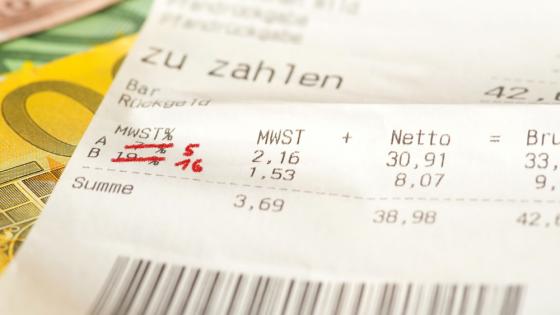The 2020/2021 lockdowns around the world have put severe strains on public finances (Larch et al. 2021). The fiscal situation of most countries is becoming so serious that there have already been calls for a wealth tax to permit the continued financing of existing expenditures and debt. But a tax that is levied indiscriminately on all forms of wealth is a massive disincentive to the accumulation of productive capital, one of the major forms of wealth, and could also lead to migration of the wealthiest out of a country that implements it. Our paper instead proposes a tax reform that shifts taxes away from productive labour and capital, where they reduce incentives to work and save, and onto land, where they do not distort any such incentives (Kumhof et al. 2021). This provides not only sustainable government financing, as land cannot migrate out of the country, but also a much needed and potentially very large output stimulus.
It has been well-known since the physiocrats (Quesnay 1756) and the classical economists (Smith 1776, Ricardo 1817, Mill 1848, George 1879) that a tax on the annual rental value or the capitalised asset value of unimproved land, assuming that land is put to its highest and best use, while excluding the value of buildings and capital goods currently situated on the land, does not distort incentives and is therefore desirable on grounds of economic efficiency. When the land value tax revenue is used to reduce taxes on labour or capital (buildings plus capital goods), output and economic welfare grows. In addition, a land value tax effectively pools property risk by reducing the private value of the riskiest component (land) of the property asset and transferring it to the whole community. To make these arguments, it is necessary to think in terms of a three-factor production function in labour, capital, and land. However, at the end of the 19th century neoclassical economics started instead to assume a two-factor production function that merged land into capital. Stiglitz (2015) argues that this obscures important insights about growth and distribution. We argue that it obscures perhaps even more important insights about the potential benefits of tax reform.
Harrison (2012) and others argue that land value taxes are also desirable on environmental grounds. The reason is that, like environmental taxes, land value taxes discourage idle land speculation, and the underuse, waste, and sprawling development of sites.
Data
A key calibrated input into our analysis is the size of the tax base, specifically the share of land and other non-produced assets in the total value of physical assets, where the latter receive around 40% of gross income in the national accounts. We approximate the US land share by subtracting the BEA measure of the stock of physical capital from the Fed Flow of Funds net worth of households and non-profit organisations. Over the last decade, this shows a US land share in total nonfinancial assets of more than 50% (more than 40% since the early 1990s), while the ratio of land to annual GDP currently equals more than 250%. This means that the tax base is very large. OECD data for other industrialised economies – which in several cases use high-quality bottom-up methodologies for determining land shares – corroborate this result, finding land shares that are mostly between 40% and 60%.
The most common method for determining the share of land in real estate values is the so-called land-residual method, which deducts the replacement construction cost of buildings from the total combined value of the site. However, this confuses the cost of construction with the value in use and, especially for older buildings, tends to greatly underestimate land values, due to locational obsolescence of the buildings. The correct building-residual method instead determines the value of buildings as a residual, after determining land values in their highest and best use independently. Due to computer-aided valuation techniques combined with hedonic estimation approaches, this has become increasingly feasible on a large scale.
Conceptually, the proper definition of the tax base for a land tax is the entire material universe excluding people and their products – including surface land, mineral resources, water, air, sunlight, and the electromagnetic spectrum – but typically data, including even the OECD data, include only or mostly surface land. Gaffney (2009) emphasises that, as a result, the concept of taxes on land is far broader than the traditional property tax on real estate excluding buildings, and that land is even more lightly taxed than is commonly perceived.
Tax reform simulations
To study the effects of a shift of taxes onto land, we develop a closed economy dynamic economic model where land is a third factor of production in addition to labour and capital, and where households supply the three factors of production and have standard Greenwood et al. (1988) preferences over consumption and labour. This model features government spending and transfers that are constant relative to trend, and that are financed by taxes on the incomes of labour, capital and land, taxes on consumption, and taxes on the values of capital and land. We calibrate the model to match not only US macroeconomic aggregates, but also the components of US fiscal expenditures and taxes, very closely, in order to obtain a realistic starting point. We then perform various simulations whereby, over a period of 20 years, the tax rates on either the annual rental value or the capitalised asset value of land gradually increase, while the tax rates on labour and capital incomes decrease to maintain a balanced budget. We also compare such a reform to a wealth tax, which increases taxes on both land and on the capital situated on the land equally, and a constrained-optimal tax, which caps the tax rate on land at 20% and raises any remaining needed revenue in the least distortionary way possible, through a consumption tax. Figure 1 shows the results.
Figure 1 Four simulated tax reforms
Our baseline tax reform (black solid line) is an increase in the land asset value tax (LAVT), specifically an increase in the tax rate on the capitalised asset value of land from its current 0.55% to 5.55%, accompanied by reductions in capital and labour income tax rates of 28 and 10 percentage points. This is a very large tax reform, but it would not be unprecedented by US historical standards (see Wallis 2000 on the 19th and early 20th centuries).
The baseline LAVT reform increases output by almost 15% relative to trend. In an economy with separate groups of workers, capitalists, and landlords, the output gain remains the same. When we increase the elasticity of labour supply with respect to after-tax wages from its baseline 0.75 to a still quite standard 1.00, the output gain increases from 15% to 21%. Another alternative we study is an increase in the land rental value tax (LRVT), an increase in the tax rate on the annual rental value of land. While this also has strong stimulus effects, this tax rate needs to reach almost 100% to have comparable effects to the baseline reform. The reason is that a LRVT only taxes rental values but not capital gains, which account for a very high share of the return to land. We also show that the relationship between the LAVT rate and the resulting gain in tax revenue is monotonically increasing but becomes quite flat when the tax rate goes much beyond 10%. The same is true for the relationship between the LAVT rate and output gains.
For a wealth tax (red dotted line), output gains are only just over half as large as in the baseline. This is because this tax only improves the incentive to work but not the incentive to save. For a constrained-optimal tax (blue dashed line), output gains are almost twice as large as in the baseline. This is because this reform maximises the incentives to work and save, by completely abolishing all income taxes. It raises 55% of all tax revenue through land taxes, with the remaining 45% raised through a 12% consumption tax.
An intermediate case between the land and wealth taxes is the property tax, which taxes land and buildings but not capital equipment. Plassmann and Tideman (2000) study Pennsylvania cities that shifted taxes from buildings to land. They find that a one percentage point difference in the annual taxes on buildings and land led to a 15.8% increase in annual construction. This strongly supports the idea that the property tax would be much less effective than the land tax in stimulating the economy, because it still reduces the incentive to save, only less so than the wealth tax. We do not study the property tax in our paper.
Discussion
In the US, shifting taxes from labour and capital onto land (and consumption) can continue to finance existing levels of spending and debt while providing a massive boost to output. The reasons are that the tax base for a land tax is very large, and that the taxes on the incomes of labour and capital that are replaced by a land tax are very distortionary. Given that the US land share is not unusually high, similar results are likely to hold in most other economies. Furthermore, as we discuss in more detail in our paper, the number of net winners from this reform would far exceed the number of net losers, who, if necessary, could be exempted or compensated at little budgetary cost. The winners would even include almost all of the very rich, who not only hold the vast majority of US land but who as a rule are also very well diversified, with land only accounting for a small share of their portfolios. They would benefit greatly from the countervailing cuts in labour and capital income taxes.
There are two main and interrelated reasons why such a beneficial shift has nevertheless not been undertaken. The first is that there is an immediate and potentially large drop in land values, while the full benefits in terms of incomes take longer to develop. The second is political, with the small number of potential losers often being in a strong political position.
The drop in land values could affect the financial system due to the pervasive use of land as loan collateral. However, as a rule loans are repaid out of total borrower cash flow rather than through liquidation of collateral, and we show that unless a borrower derives their cash flow exclusively, or nearly exclusively, from rent, their total cash flow would improve. This is because the cash flow diverted to the government through land taxes is not kept but used to lower taxes elsewhere. Furthermore, any initial negative effects on net taxpayer cash flow is small due to a gradual phase-in, while when land taxes become more substantial, the economy has started to generate much higher cash flows due to the economic stimulus.
If the initial drop in land values is nevertheless perceived to be a problem, the obvious solution would be to reduce the (initial) size of the reform. An example of a smaller-scale reform is shown in the figure (green solid line with black markers). It limits the LAVT to only 2% by the end of the phase-in period. Land prices now only drop by around 15% in the short run and 10% in the long run, much less than the 45% and 38% in the baseline, and therefore much less likely to be perceived to be a problem. But there is a clear trade-off, in that the long-term output gains drop from 15% in the baseline to 7%. Politicians would have to manage this trade-off carefully, especially if voters understand what is at stake. To overcome the political hurdles and maximise the benefits of the reform, it would therefore be of paramount importance that voters understand how extreme one’s income situation would have to be not to be a net winner, and how large the benefits could become if the reform was (subsequently) made more substantial in size. If there was political will, this information could be produced and disseminated by governments, perhaps in the form of a representative set of tax returns that show ‘before’ and ‘after’ columns. Politicians have every reason at least to study this option, despite the obvious hurdles, as it would put government finances on a much more sustainable footing, while making the vast majority of their voters very happy.
References
Gaffney, M (2009), "The Hidden Taxable Capacity of Land: Enough and to Spare", International Journal of Social Economics 36(4): 328-411.
George, H (1879), Progress and Poverty, The Robert Schalkenbach Foundation, 1960.
Greenwood, J, Z Hercowitz and G Huffman (1988), "Investment, Capacity Utilization, and the Real Business Cycle", American Economic Review 78: 402-417.
Harrison, F (2012), The Traumatised Society, Shepheard-Walwyn.
Kumhof, M, N Tideman, M Hudson and CAE Goodhart (2021), “Post-Corona Balanced-Budget Super-Stimulus: The Case for Shifting Taxes onto Land”, CEPR Discussion Paper No. 16652.
Larch, M, J Malzubris and S Santacroce (2021), “Economic growth as the ultimate constraint: EU fiscal policies in 2020”, VoxEU.org, 19 May.
Locke, J (1690), Two Treatises of Government, Hafner Press, 1947.
Mill, J S (1848), Principles of Political Economy, D. Appleton and Company.
Plassmann, F and N Tideman (2000), "A Markov Chain Monte Carlo Analysis of the Effect of Two-Rate Property Taxes on Construction", Journal of Urban Economics 47: 216-247.
Quesnay, F (1756), "The General Maxims for the Economic Government of an Agricultural Kingdom", in R L Meek (ed.) (1963), The Economics of Physiocracy, Harvard University Press, pp. 231-262.
Ricardo, D (1817), The Principles of Political Economy and Taxation, E. P. Dutton, 1911.
Smith, A (1776), The Wealth of Nations, Random House, 1937.
Stiglitz, J (2015), "New Theoretical Perspectives on the Distribution of Income and Wealth Among Individuals: Part I. The Wealth Residual", NBER Working Paper No. 21189.
Wallis, J (2000), "American Government Finance in the Long Run: 1790 to 1990", Journal of Economic Perspectives 14(1): 61-82.








